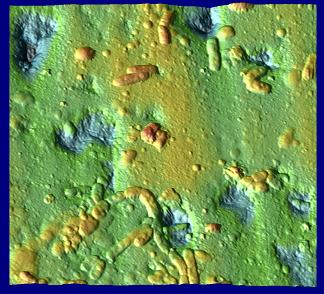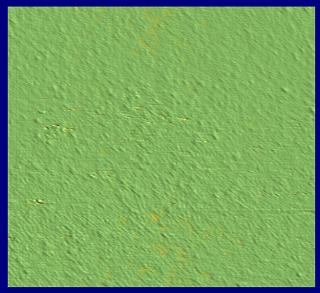Clarkson University researchers fight tooth decay-causing bacteria by polishing human teeth with silica nanoparticles

The headlines on TV assure us that nanotechnology is a new science that will change the face of the world - among other things, it will allow us to efficiently extract energy from the sun and produce nanorobots that will repair the human body from the inside. But every big field has to start with a small step, and that's exactly what a pair of researchers from Clarkson University in New York did, when they invented a new way to keep teeth healthy by lithosion in silica nanoparticles.
Professor Igor Sokolov and research student Ravi M. Gaikwad adapted polishing and polishing technology used in the semiconductor industry, and succeeded in polishing the surface of a human tooth to an almost perfectly smooth surface. The end result is a tooth whose surface has zero roughness. The largest bump on the surface is a few nanometers in size, about 100,000 times smaller than a grain of sand.

Why do you need such smooth teeth? The great advantage of the polished surfaces is that disease-causing bacteria have difficulty finding a foothold on the teeth. The harmful bacteria are responsible for tooth decay, during which the enamel of the tooth is gradually destroyed. Using the new polishing technology, it will be possible to remove the bacteria relatively easily before they cause real damage to the teeth.
Although the use of silica particles for polishing teeth has been demonstrated in the past, the use of nanoparticles has not yet been attempted. The researchers believed that by using the tiny nanoparticles, it would be possible to achieve a maximum polishing effect. Just as sandstorms in the desert - in which fine grains of sand are blown at great speed - can clean the flesh off the bones in a short time, so the teeth can be polished more efficiently using the nanoparticles.
The study was published last October, in the Journal of Dental Research, one of the most important newspapers in the field of dental research. Sokolov himself is a professor of physics and chemical and biomolecular sciences, and head of Clarkson's Center for Nanoengineering and Biotechnology Laboratories. This is one of the first research projects carried out in the recently founded center.

7 תגובות
As far as I understand, the sanding procedure is not intended to eliminate serious defects in the tooth, if at all, but only to lower the existing degree of roughness of the tooth (improving the quality of the surface quality) and thus reduce the degree of bacteria's grip. Actual bumps are not the significant factor that affects the ability of the bacteria to grip, because in their dimensions these defects are negligible (everything looks flat for example for a large enough radius, or for a small enough creature).
Larger defects already affect the degree of retention of food residues that hopefully get rid of during brushing, something that is not guaranteed to happen to the bacteria in the brushing.
The depth of sanding is at least as deep as the bumps and depressions (defects) in the tooth. Sounds like a lot of nanos to me.
Do the teeth have a regenerative capacity that allows them to regenerate after this grinding? What is the suggested frequency for the described procedure?
As far as I know, it is customary after sanding to observe some kind of matching glaze in order to preserve the procedure... and the teeth of course, otherwise this procedure did not achieve its purpose.
I wouldn't be surprised if a random dentist reading the comments bares his teeth with a smile on our suspicions...
kid,
In dentistry, a procedure of grinding the tooth using micro-particles is accepted. As of today, to the best of my knowledge, it has not been proven that the procedure damages the tooth (assuming it is not performed every day, of course).
Nanoparticle sanding is likely to be even less offensive, since it is a layer of a few nanometers removed at a time, while the microparticles certainly remove a thicker layer.
I don't think so. And even if the erosion of the tooth continued over time, it is a smoothing of a few nanometers at a time. To reach significant wear, many tens of years have to pass, and this is assuming that the polishing is performed daily.
a question:
After a few uses of this material, does
Won't the tooth wear down and break?